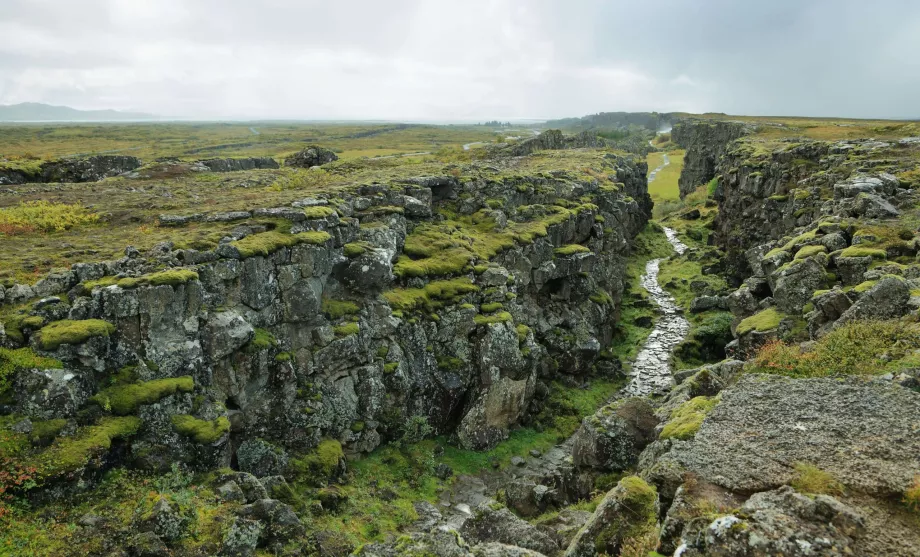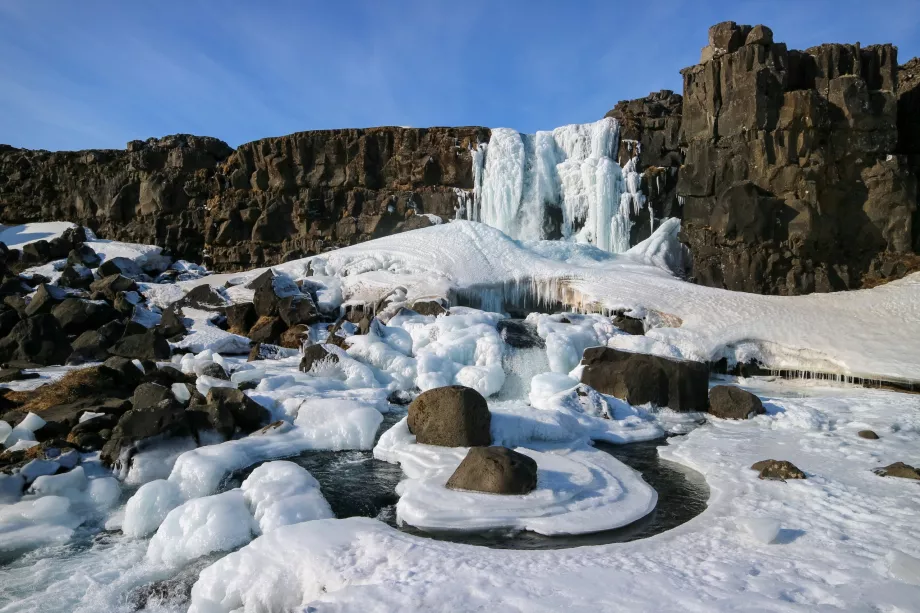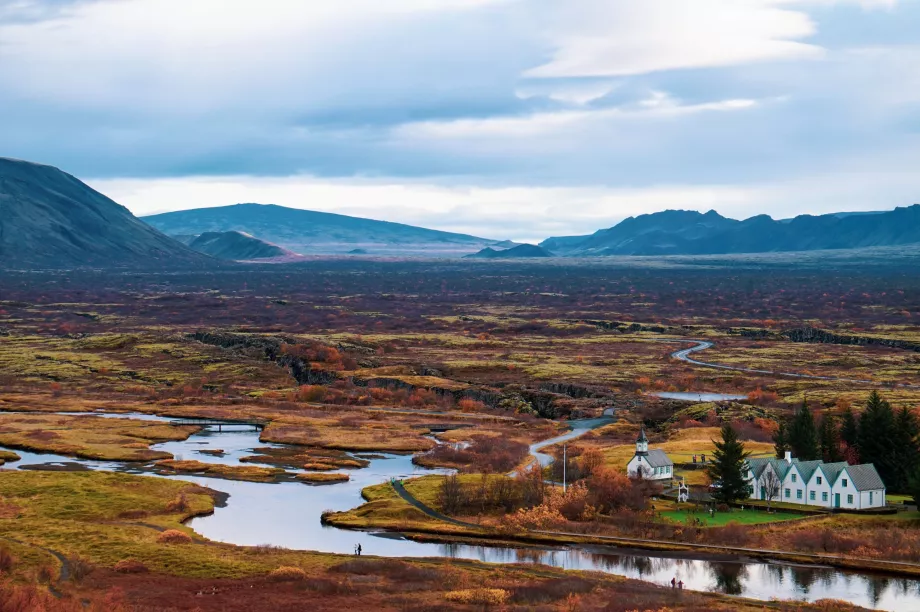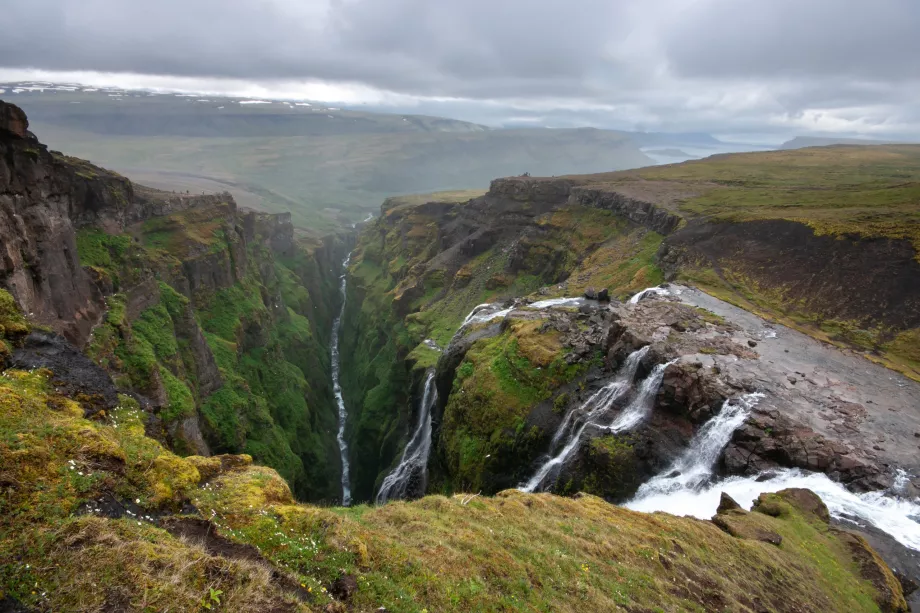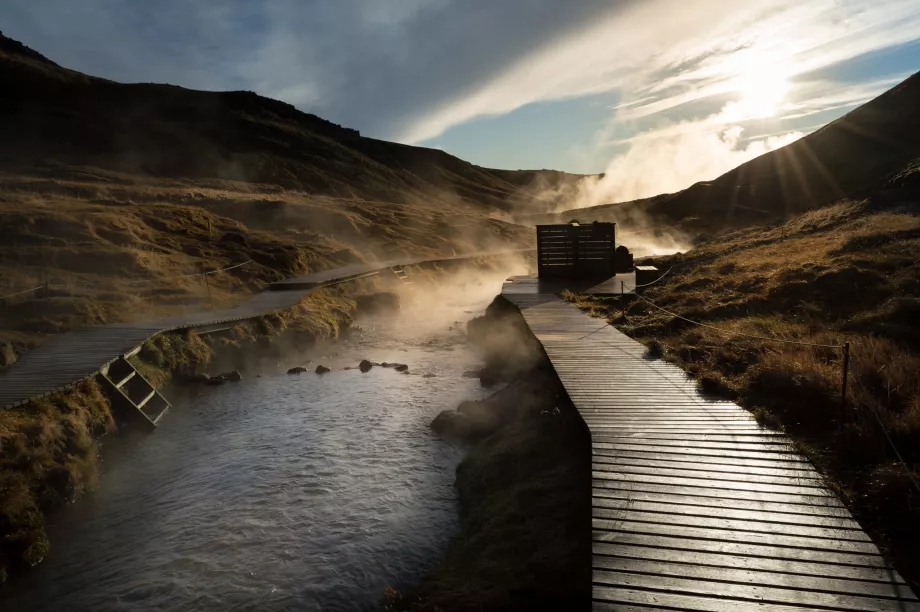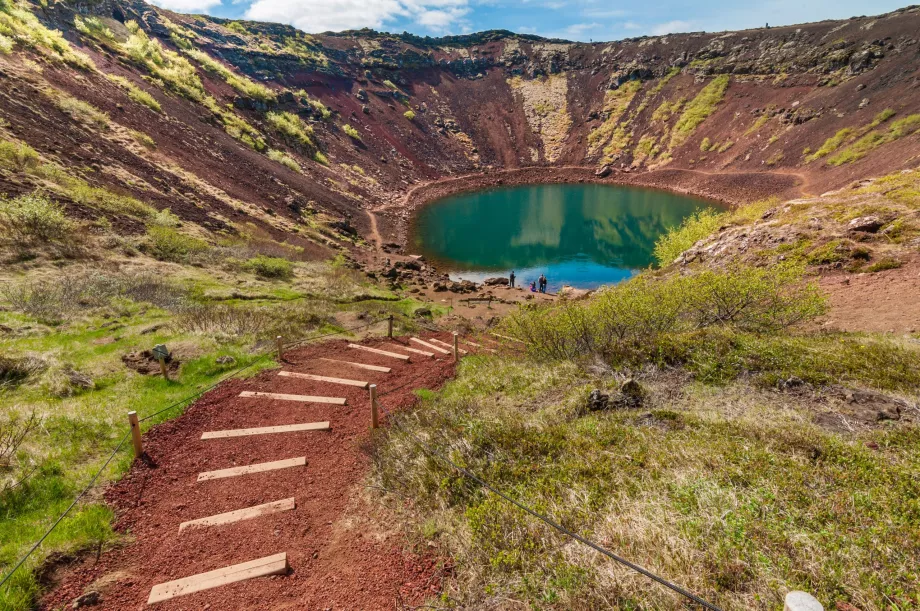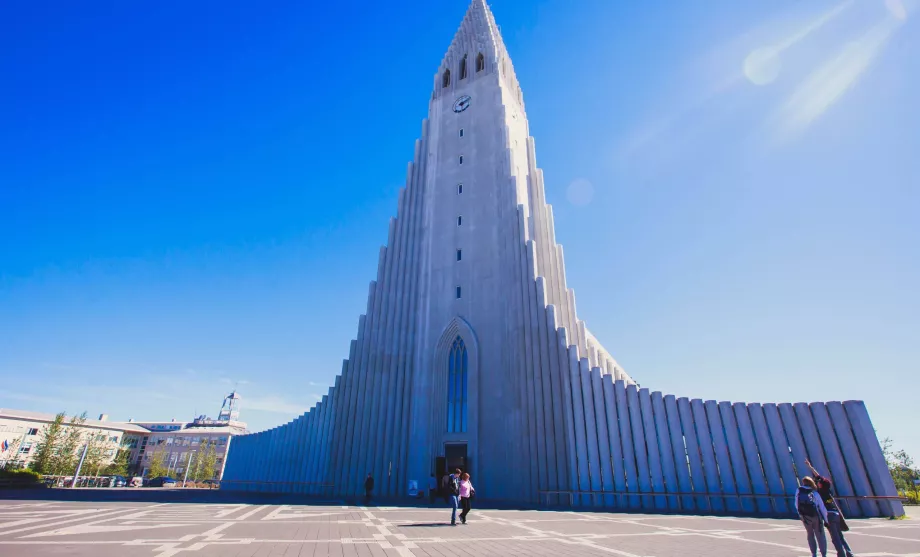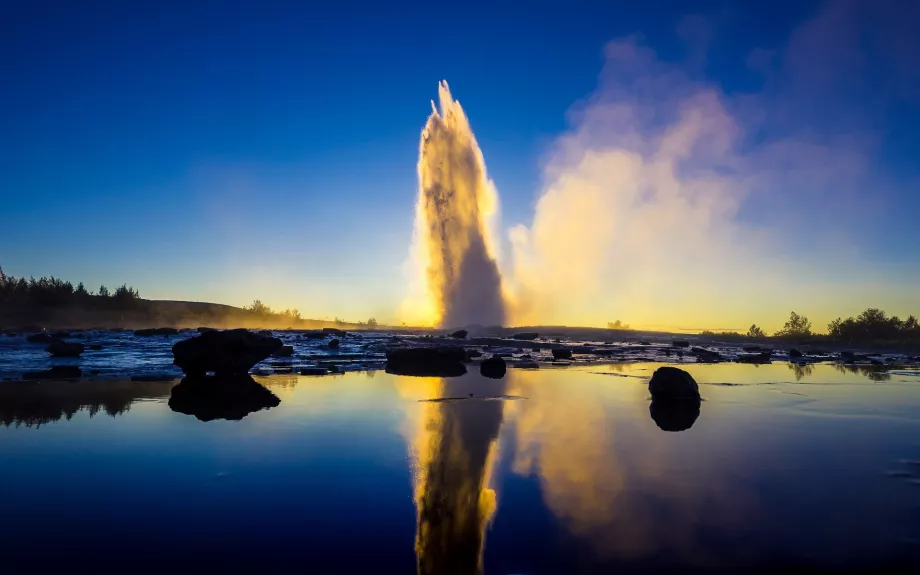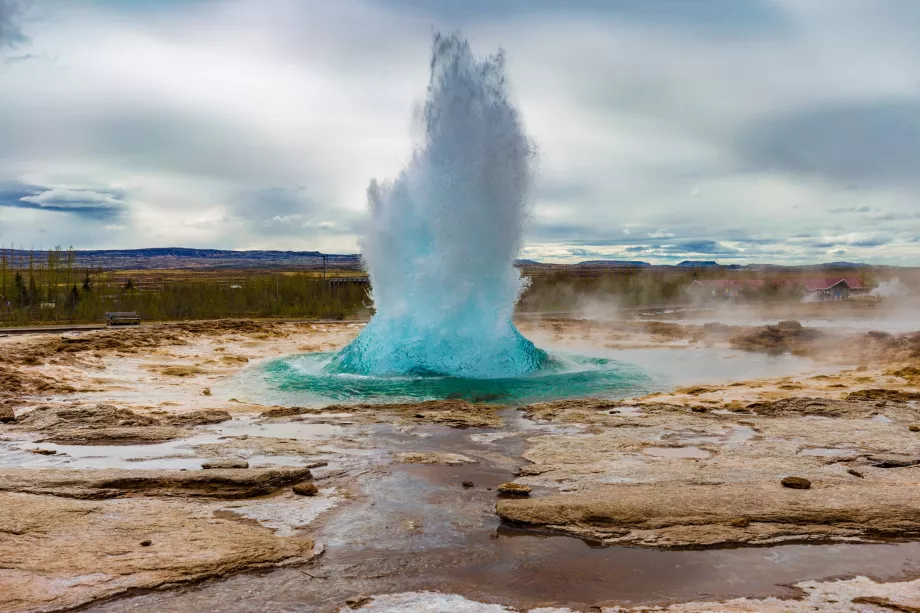Thingvellir
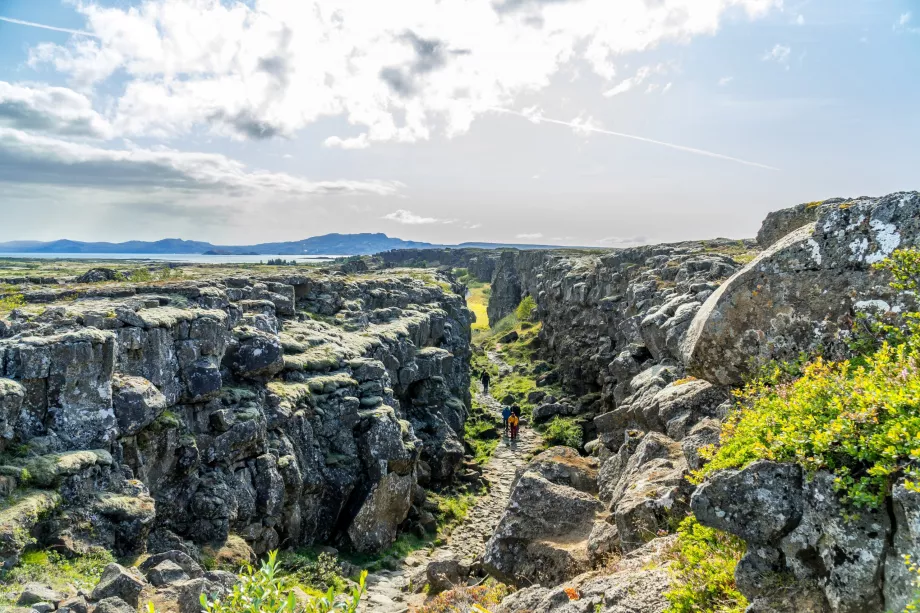
Þingvellir National Park (transliterated as Thingvellir, often incorrectly also Pingvellir) is one of Iceland's busiest tourist spots and one of the world's most geologically significant sites. Because it's on the Golden Circle and relatively close to Reykjavik, you're likely to encounter the largest crowds of tourists here, but you'll still enjoy plenty of privacy thanks to the vastness of the place.
Compare car rental prices in Iceland
Þingvellir National Park has been a UNESCO World Heritage Site since 1983, but not as a natural monument as it might first appear. Thingvellir is listed as a cultural monument for preserving the remains of the world's oldest parliament, the Althing, which was founded in this very area.
Where Europe meets America
Either way, the main tourist attraction of Thingvellir is the extraordinary nature and tectonic or geological phenomena. In fact, the area lies in a trench exactly on the fault between the North American and Eurasian tectonic plates, which is evident at first sight in Thingvellir.
The transition between the continents can be clearly seen in the cracks, ravines and valleys with their mystical basalt rocks. The most famous canyon is the wide Allmanagjá Valley, through which the Öxarjá River flows and on the edges of which you will find a series of photogenic narrower gorges and canyons. Allmanagjá is also the tourist centre of the area.
The Allamanagjá valley ends in Iceland's largest lake, Thingvallavatn, whose northern shores are just a few hundred metres from the main visitor centre.
Hiking trails and Öxarafoss
The national park is crisscrossed by dozens of kilometres of mostly short and very comfortable hiking trails across the plain. While the southern part is dedicated to views of the wide river valley, be sure to head less than 1 km north from the parking lot into the narrow basalt canyon that ends with the beautiful Öxarafoss waterfall.
For a basic map of hiking trails, check out the official NP website thingvellir.is.
Alþing: the oldest parliament in the world
Probably the world's oldest parliamentary institution still in operation was founded in Thingvellir around 930: Althning (Alþing). Every summer, 36 tribal chiefs met here to decide the shape of life on the island.
The location of Thingvellir was not chosen at random. The wide plains were the most accessible of any part of Iceland then inhabited.
The last session on Thingvellir was held in 1789, when the parliament was moved to the capital Reykjavik. The Althing building is now the summer residence of the Icelandic Prime Minister and there is a small church nearby. The place is freely accessible except for the interior.
Accommodation
It is forbidden to construct any buildings directly in the national park, so you will not find any accommodation here. However, since Thingvellir is not far from the capital, you can easily stay there.
Then in the north of the national park you can use the official campsite with prices starting from 1 300 isk per person.
How to get here?
The best and very easy way to get to Thingvellir is by car on the main asphalt road number 35, which is passable for all types of cars all year round. From Reykjavik, the national park is only 47 km away (route map: google.com/maps), which is literally "around the corner" by Icelandic standards. At the visitor centre you can stop at the large free car parks, which are located just a few dozen metres from the main attractions.
There are no public buses to Thingvellir, so your only chance of getting around without a car is to use one of the tour operators in Reykjavik. For example, Reykjavík Excursions offers a 6-hour trip across the entire Golden Circle including a visit to the Haukaladur area from 8 000 isk.
Entrance fees and opening hours
Thingvellir National Park is open 24 hours a day and free of charge.
You can visit the small museum in the visitor centre building, for which there is a fee 1 000 isk.
What to see around
Discover all the places to see in Iceland.
Any questions left?
If you have any questions or comments about the article...

